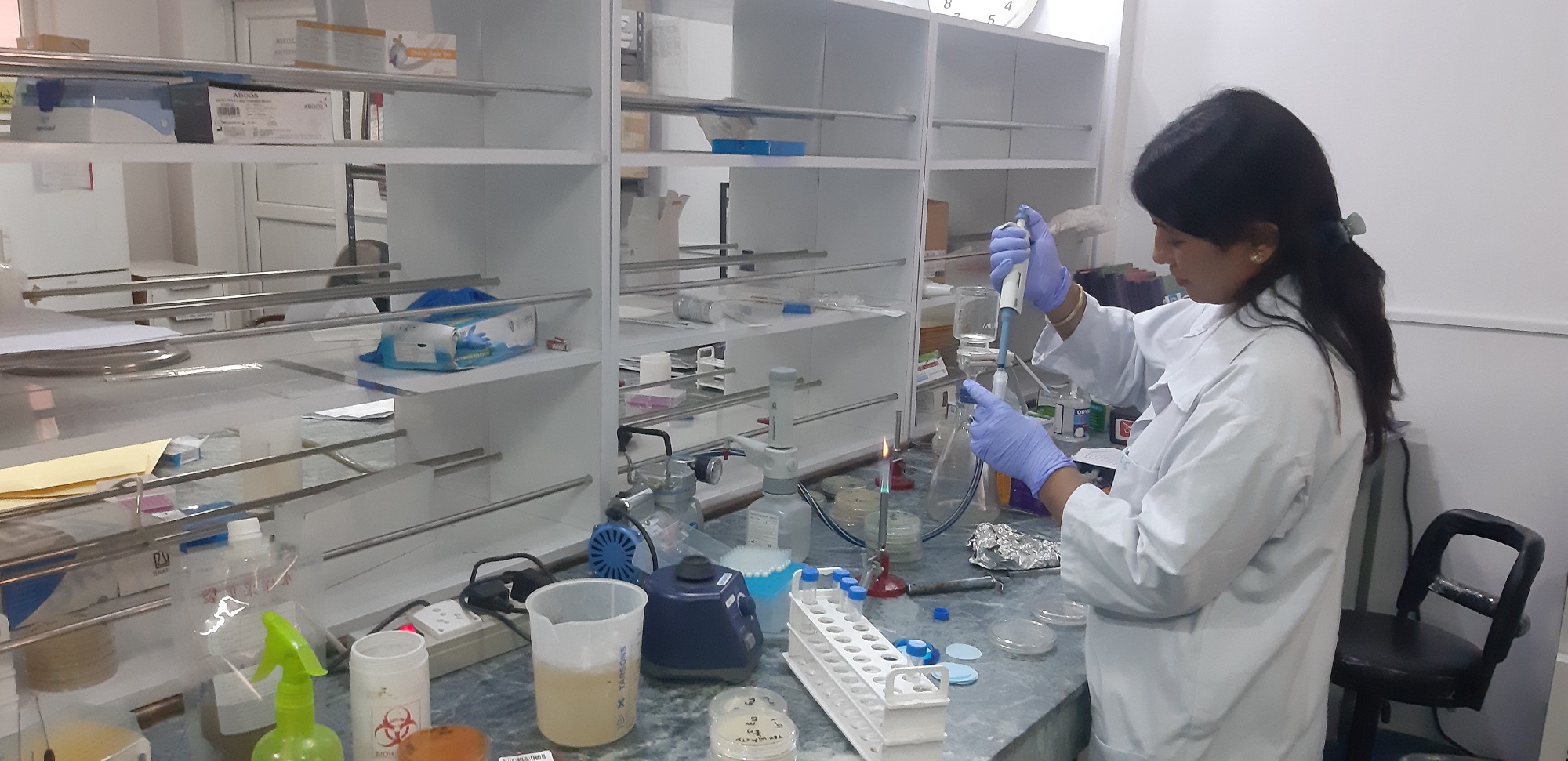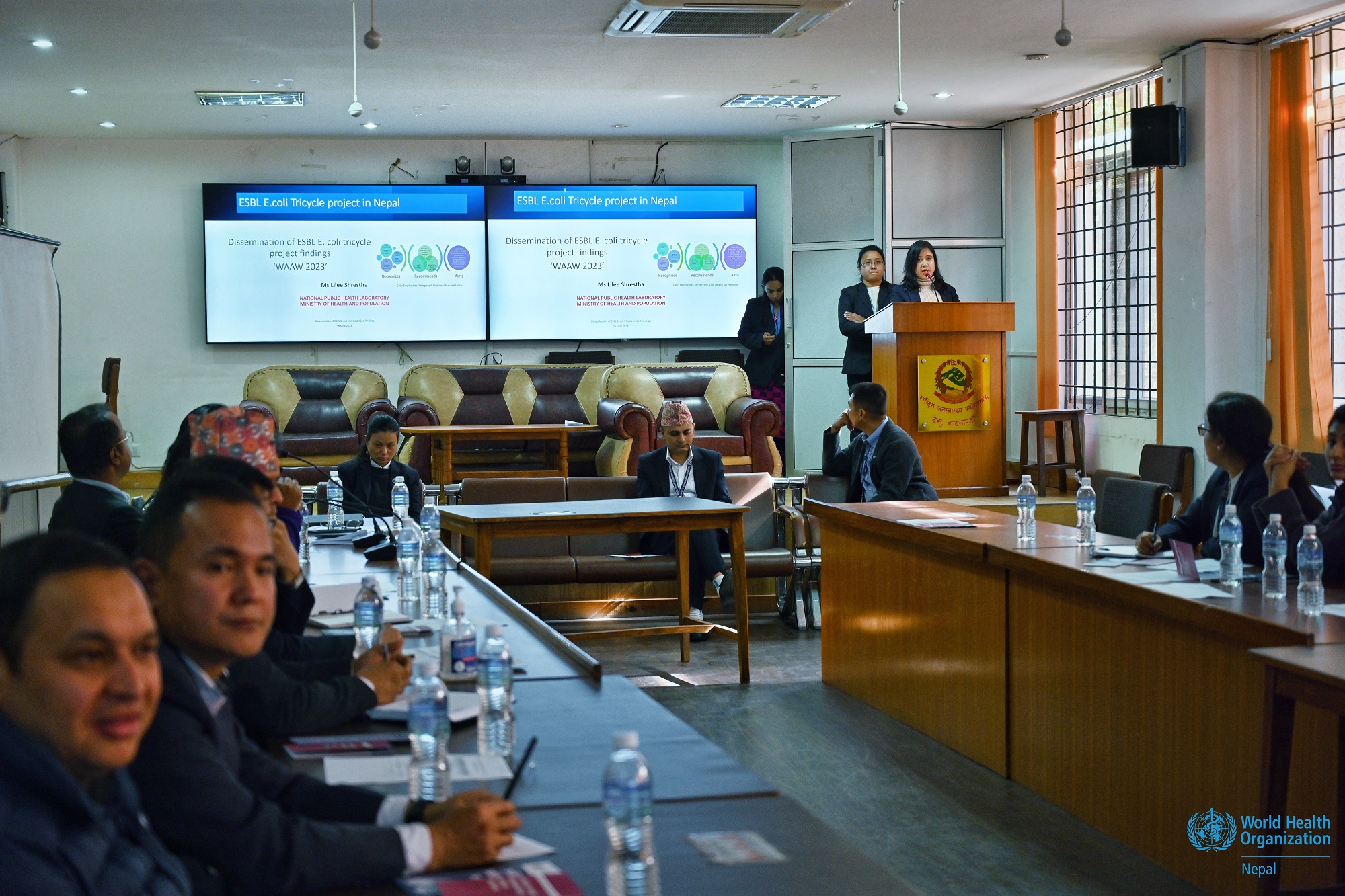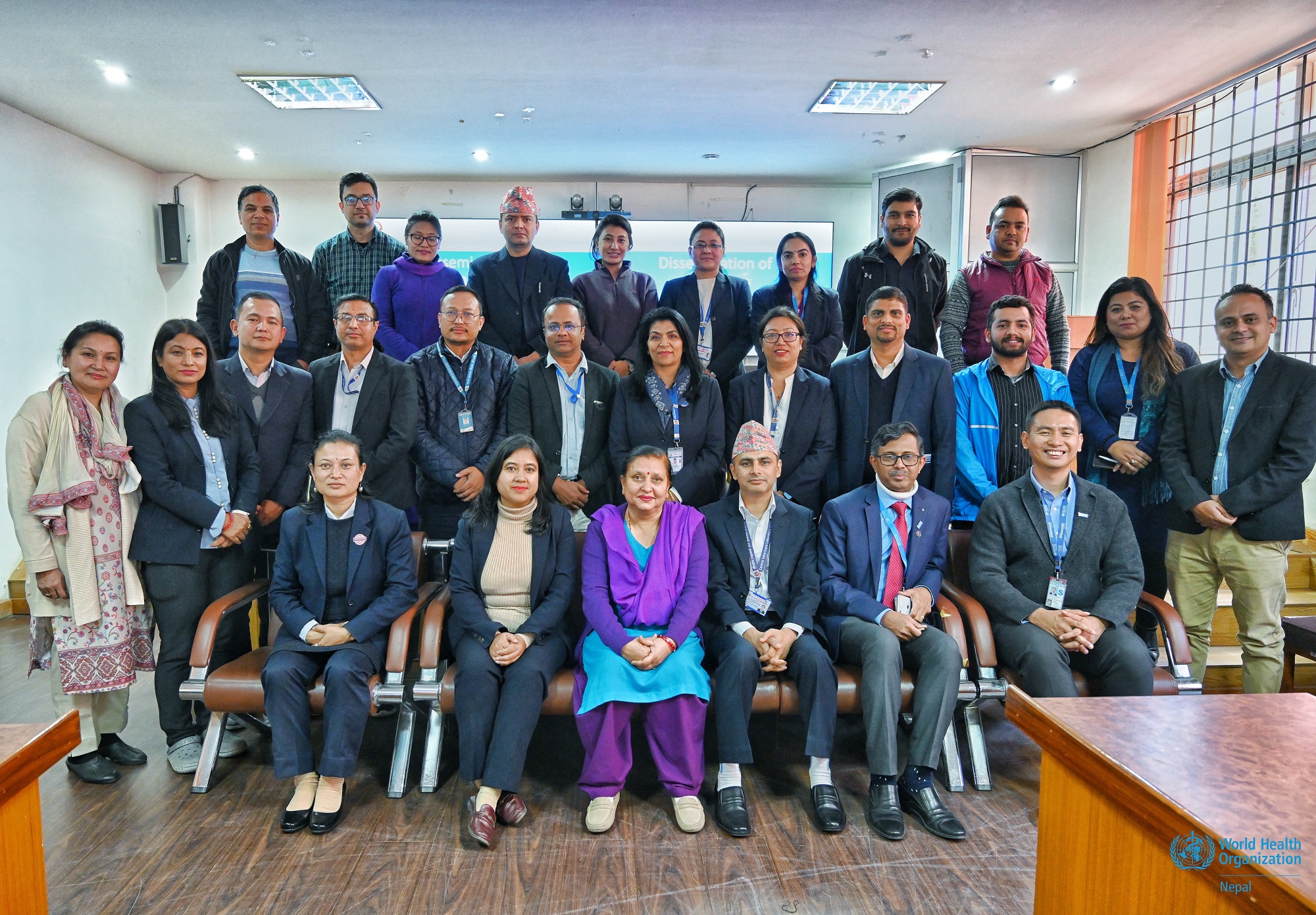Nepal has become the third country in the WHO South-East Asia Region to successfully implement the Extended-spectrum Beta-lactamase (ESBL) Tricycle Project to conduct antimicrobial resistance surveillance with One Health Approach.
The tricycle model targets monitoring of a single indicator - the frequency rates of Extended-spectrum Beta-lactamase (ESBL), responsible for producing AMR properties in Escherichia coli (ESBL-E.coli), a type of bacteria that is commonly found in the intestines of humans and animals. Experts hypothesize that if this AMR-causing bacteria can be studied and controlled, the global burden of AMR can be reduced.

A medical lab technologist processing water samples to detect AMR-causing organisms at the National Public Health Laboratory, Bagmati Province, Nepal. Photo credit: National Public Health Laboratory
The pilot project in Nepal, which ran from December 2019 - November 2023, showed a high prevalence of AMR-causing ESBL-E.coli in samples from all three sectors - human health, food chain (animals), and the environment. This presence is a globally recognized indicator of bacteria being resistant to antibiotics, which is included in the monitoring of the Sustainable Development Goals, making it more challenging for doctors to treat various infections.
The project, developed by the Advisory Group on Integrated Surveillance of Antimicrobial Resistance (AGISAR) and the WHO Surveillance Prevention and Control of AMR, also highlighted the interconnected nature of AMR where these bacteria were prevalent in all three sectors, emphasizing the need for a coordinated and multisectoral approach between all three areas, or a "One Health" approach, also emphasized in The Global Action Plan on AMR (GAPAMR), adopted by WHO Member States, including Nepal.

A senior veterinary officer processing poultry to detect AMR-causing organisms at the Central Veterinary Laboratory, Bagmati Province, Nepal. Photo credit: National Public Health Laboratory
The results of the study emphasized the need to strengthen AMR surveillance and monitoring systems to track the spread and prevalence of ESBL-E.coli in various settings; enforce regulations and policies to contain AMR, especially on use of antibiotics in healthcare, agriculture, and veterinary practices; implement antimicrobial stewardship programs; and improve infection prevention and control including treatment of wastewater and hospital waste.

Ms Lilee Shrestha, Chief Medical Technologist, presenting the findings of the project during a dissemination program held at the National Public Health Laboratory, Bagmati Province, Nepal. Photo credit: WHO Nepal/S.G.Amatya
“Strengthening our AMR surveillance systems is one of the main strategic objectives in the National Action Plan on AMR. This project is a good foundation upon which we can further strategize and plan more comprehensive AMR surveillance and containment efforts, including raising awareness among healthcare professionals, policymakers, and the general public, and enforcing regulations to curb the misuse of antibiotics,” says Dr Ranjan Raj Bhatta, Director of the National Public Health Laboratory (NPHL), Ministry of Health and Population (MoHP).
As part of the three-year pilot project, WHO, Country Office for Nepal, supported the Government of Nepal to implement the WHO Tricycle protocol for the global surveillance projects, and conducted activities including sensitization workshops, field visit demonstrations for sampling, laboratory-related training/ protocol adaptation workshop for isolation, screening for ESBL-E.coli, antibiotic profiling, data analysis training, and distribution of reagents for laboratory testing.
The NPHL acted as the lead agency to conduct project implementation, surveillance, and supportive monitoring, while the Central Veterinary Laboratory (CVL), under the Department of Livestock Services, executed activities related to sample collection, processing, and identification of ESBL-E.coli from poultry samples. The NPHL also acted as the focal point for laboratory testing for environmental samples, and coordinated with human health surveillance sites and CVL for transportation, validation, and preservation of isolates for whole genome sequencing.

Core group members of the project at a dissemination program of the project findings held at the National Public Health Laboratory, Bagmati Province, Nepal. Photo credit: WHO Nepal/S.G.Amatya
Building on the successful completion of the project, WHO will continue to support MoHP and partners to strengthen antimicrobial stewardship programs, raise awareness on AMR and the responsible use of antibiotics, support the implementation of mitigation strategies to prevent the rapid dissemination of drug-resistant organisms across sectors, and foster a collaborative approach for integrated AMR surveillance.
“This project provides WHO Member States with a uniform and simplified tools to detect, and then estimate, the prevalence and evolution trends of these AMR-causing organisms in Nepal, improving the understanding of their scale of the spread. An avenue for collaborative efforts in combating AMR has been set, which will help Nepal get closer to an efficient, robust, and multisectoral surveillance system and support to maintain the efficacy of these life-saving antibiotics,” says Dr Rajesh Sambhajirao Pandav, WHO Representative to Nepal.
